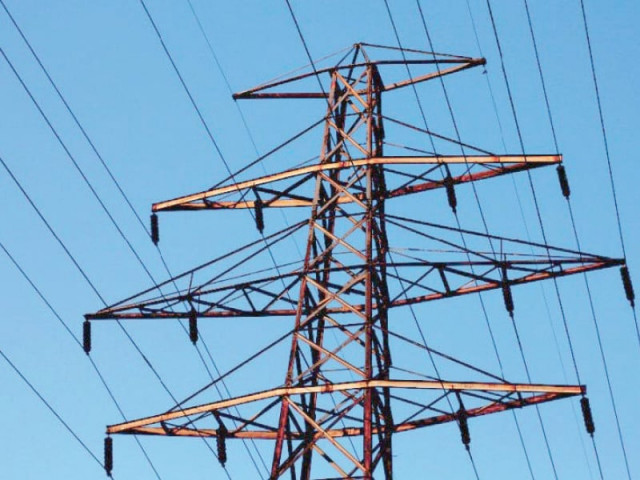IPPs: nationalisation a flawed idea
Country needs to cut line losses, privatise distribution, create competitive market

The escalating cost of electricity for industrial, commercial and residential consumers has led to increasing pressure on the government to take urgent measures.
One of the demands from the public is the takeover of independent power producers (IPPs), which in other words is nationalisation. This demand, as echoed in public discussions, media talk shows and press conferences by the business community, is the result of a poor understanding of the power sector dynamics.
It also shows we are forgetting the peril that the wholesale nationalisation of the 1970s brought to Pakistan’s economy, and its society.
When it comes to the installed power generation capacity, 50% is held by government-run generation companies (Gencos) and the IPPs have the remaining 50% market share. In 2023, however, 55% of the electricity was generated by the government-run Gencos.
Except for K-Electric, the entire transmission and distribution system is already nationalised. All distribution companies (DISCOs) are controlled by the federal government as frequent dismissals of their boards indicate. The restructuring and unbundling of the power sector that started 25 years ago remains an unfinished agenda.
Contrast it with the recent focus of public outcry on the IPPs and the demand to “take over”, as if it will solve all energy problems. IPPs have been linked with the so-called 40 families, echoing the 22 families’ socialist saga of the 1960s, which was politically exploited to prepare the public for nationalisation.
There is uproar over the central dynamics of the IPPs – the “take-or-pay” contracts. In simple words, the consumers are obliged to pay certain charges on electricity, which is not produced, but warrant the adjustment of fixed cost of the operating IPPs as per their installed capacity.
Without this clause, no investor will be willing to invest in the IPPs. This is the global practice and Pakistan is no exception. In 2024-25, the capacity charges are estimated to be Rs17 per unit, approximately 25% of our monthly bills.
As energy expert Syed Akhtar Ali wrote in a column almost a year ago, the take-or-pay contract offers safeguards to both power producers and consumers, though they should be offered in a competitive system. In fact, it offers a cheaper solution.
We have achieved the diversification of power generation. With the addition of LNG, and now solar and nuclear power, we will be improving the fuel mix in the coming years, thus bringing the average cost of production down.
On the other hand, we have not done any serious reform on the ground to bring competitive market pressure in transmission and in particular, the distribution system. Spot markets are absent.
Our system has the capacity of transmitting and distributing only 50% of the electricity generation capacity. It means that the fixed cost accrued by the IPPs in the form of capacity costs will have to be paid by a narrow base of on-grid consumers, which is becoming narrower as the off-grid solar power solutions are increasing rapidly. In a way, the grid is subsidising off-grid.
There are two main reasons of the increasing fixed cost or capacity charges. One is the historic devaluation of the Pakistani rupee since 2014, which has depreciated by almost 178% from Rs100 to Rs278 to a dollar in 10 years.
This problem was fixed during the PTI tenure, when the government negotiated with the IPPs, leading to the PKR-USD exchange rate of Rs150 for indexation. However, this rate was revised in 2024, which is Rs282 to a dollar now.
Another reason is the capital structure of the IPPs – on average, 75% of the capital is based on borrowing from domestic and international banks. With the steep rise in the cost of borrowing, the cost of capital has increased significantly.
In the case of domestic borrowing, this cost has gone up by 115% in 10 years, from 9.5% in 2014 to 20.5% in 2024. The global discount rate, as measured by the three-month Libor, was 0.23% in 2014, and now it stands at 5.54%, an increase of 23 times. If the contracts were built on a variable discount rate, the cost-built tariff will also vary.
On both accounts, there is a sufficient room for negotiations with the IPPs to bring down the capacity cost.
In addition, there can be little support for the renewal of contracts with the IPPs after the stipulated period is complete and the government needs to be more transparent here.
The closure of inefficient power plants, particularly after the contractual period, should be pursued. In an open and competitive market, there will be no buyer for such producers.
One more problem, which is not specific to the IPPs, is the amount of taxes and surcharges that we must pay on our electricity bills, which now constitute up to 33% of the bills. Thus, the federal government seems to be the biggest “shareholder” in this business.
By stopping to tax our electricity bills, it can bring consumer costs significantly down.
Concluding, the nationalisation of the IPPs is a terribly flawed idea. Firstly, without the IPPs, the country’s installed capacity would have been half of the current level. Secondly, it is fraught with insurmountable legal risks, and thirdly it will give a very bad signal to the current and future investors.
We need to improve our governance, cut line losses, privatise the distribution system and create a competitive market under a well-equipped regulator. In the long run, we need high economic growth to utilise excess electricity instead of decreasing its usage.
The writer is the Executive Director of Policy Research Institute of Market Economy (PRIME), an independent economic policy think tank based in Islamabad



















COMMENTS
Comments are moderated and generally will be posted if they are on-topic and not abusive.
For more information, please see our Comments FAQ